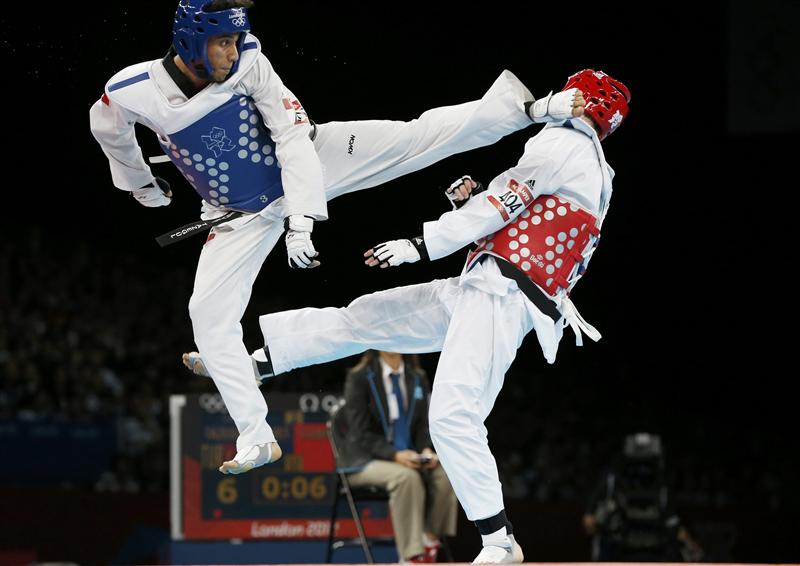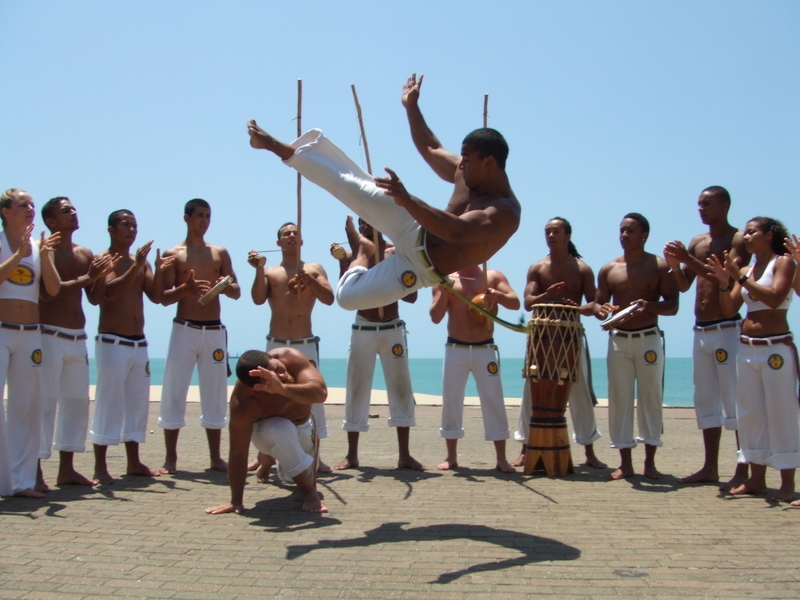Simplified down, martial arts are systems of training for combat, each with a unique philosophy on fighting. Some martial arts like Tai Chi focus on inner development and health while some like Muay Thai focus on tournament style fighting. Whether a student is training for self-defense, competition, fitness, entertainment, or for spiritual development, all styles in my opinion are beautiful art forms. Since there is a multitude of martial art forms I’ll only be able to discuss a handful of them.
Shudokan Karate

Karate is probably the most popular and widespread martial art practiced today. It originated in the Okinawa Islands of Japan and was influenced by the Chinese style of White Crane. Shudokan is a style of Karate, which includes large circular motions with an emphasis on self-defense. Modern Shudokan is a hybrid of Kobudo, traditional Okinawan weapons practice, and karate.
Wing Chun

Wing Chun is a Chinese form of self-defense characterized by close-range combat. It focuses on redirecting the opponent’s energy against them and using quick counter attacks. It was not a popular form until recently as its history was not well known and it was considered a women’s martial art. Wing Chun’s most famous student was Bruce Lee who helped the form gain popularity around the world.
Taekwondo

Taekwondo is a Korean martial art that is a blend of a few ancient Korean styles. This form is most well-known for its kicks (jumping, spinning, and head-height kicks), agility, and power. To perform fast, turning kicks, Taekwondo uses narrower stances, unlike karate which uses broader and more stable stances.
Krav Maga

Krav Maga is a self-defense style developed for the Israel Defense Forces that uses techniques from many different forms. This style is known for focusing on real-world situations and very brutal counter-attacks. It is considered one of the more aggressive martial arts making it great for military use.
Glima

Glima is a Scandinavian martial art used by the Vikings that focuses on throws and wrestling. This style spawned from the Vikings training to be the best warriors and thus needed to be able to fight without a weapon. Glima was also entertaining and Glima wrestling competitions became very popular.
Capoeira

Capoeira is a Brazilian form that combines dance, music, and acrobatics with an emphasis on kicking. It is known for fast movements and its dance-like game. It originated in the 16th century in Brazil after slaves were not allowed to practice any martial arts. Violent kicks were disguised as dance moves within the music and thus Capoeira was born.

4 Comments. Leave new
It’s fascinating to see how each style, from the powerful kicks of Taekwondo to the fluid motions of Capoeira, has its own unique philosophy and techniques. Emphasizing the practical applications and historical contexts of these arts helps students appreciate the depth and purpose behind their training. https://pulseacademy.ca/markham/
Neat and tidy review!
Glima is an interesting one with its Icelanding version called Brokartök which has many strict rules. One of the rules is that fighters move clockwise in one attacking direction
Cheers
Jason
It’s interesting that some martial arts forms were developed after the “aesthetics” of animals. Also, the philosophical aspect of martial arts has seemed to allow the art to transverse many genres and create different impressions.
I had no idea there were so many different forms of martial arts in so many different contexts and cultures. It would be interesting to learn more about the details of each form, like what do the fighters usually wear? Is their clothing significant culturally or practically? Are the fights public and viewed by audiences or private? Really cool introduction though!